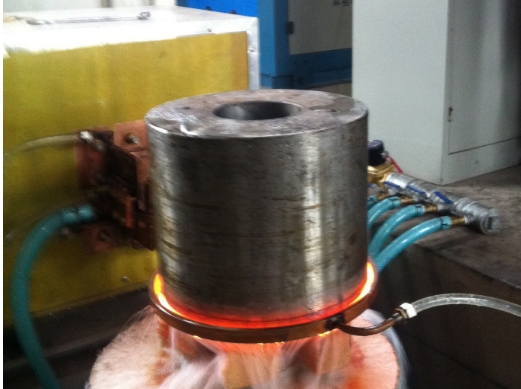- 13
- Dec
Advantages and application of quenching process of induction heating equipment
Advantages and application of quenching process of induction heating equipment
The new heat treatment process of induction heating equipment has begun to be widely used in China. This new heat treatment process uses coil electromagnetic induction to heat steel parts is very novel and attractive. It has the characteristics of fast heating, partial quenching, energy saving, online production, and easy automation. It was quickly accepted by heat treatment workers. Induction heating surface quenching is one of the better surface quenching methods. Therefore, it has received widespread attention and wide application. Compared with traditional heat treatment, it has the following advantages.
(1) Induction heating belongs to the direct heating by the internal heat source, and the heat loss is small, so the heating speed is fast and the thermal efficiency is high.
(2) During the heating process, due to the short heating time, there is less oxidation and decarburization on the surface of the parts. Compared with other heat treatments, the scrap rate of the parts is extremely low.
(3) After induction heating and quenching, the surface hardness of the parts is high, the core maintains good plasticity and toughness, and shows low L] sensitivity, so the impact toughness, fatigue strength and wear resistance are greatly improved.
(4) The induction heating equipment is compact, occupies a small area, and is easy to use (that is, easy to operate).
(5) The production process is clean, no high temperature, and good working conditions.
The new induction heat treatment process is used for quenching various workpieces as follows:
1. The full length of the rail is induction hardened
There are dozens of full-length intermediate frequency quenching production lines for rails in China, which have more than doubled the life of rails. This technology has also been extended to other parts of the railway, such as turnouts and wing rails.
2. PC steel bar production technology
The domestic induction hardening technology for PC steel bars has developed from single-frequency to dual-frequency and from single-line production to dual-line production. The energy consumption index has been declining. A company’s energy consumption for φ7~φ13.5mm steel bars has reached 304kW·h/ t.
3. Induction hardening of steel pipe welds
This process mainly eliminates weld stress and homogenizes the structure, and prevents hard spots in the segregation zone from affecting the life of the steel pipe. There are many domestic companies engaged in this industry, and most of the equipment is domestic technology.
4. Induction hardening of auto parts
The equipment and technology for induction hardening of many parts such as automobile CVJ bell-shaped shell, three-pillar sliding sleeve, wheel hub inner raceway, etc. are all localized turnkey projects. These domestically produced parts meet the needs of the rapid development of the domestic automobile industry and are more than self-sufficient.
5. Double frequency induction hardening of rolls
Domestically, it has been able to self-made dual-frequency power supply and complete sets of quenching devices. Dual-frequency quenching of rolls has been produced in a number of metallurgical plants, and its tooling quenching liquid spray ring has been technically improved and has achieved practical results.

